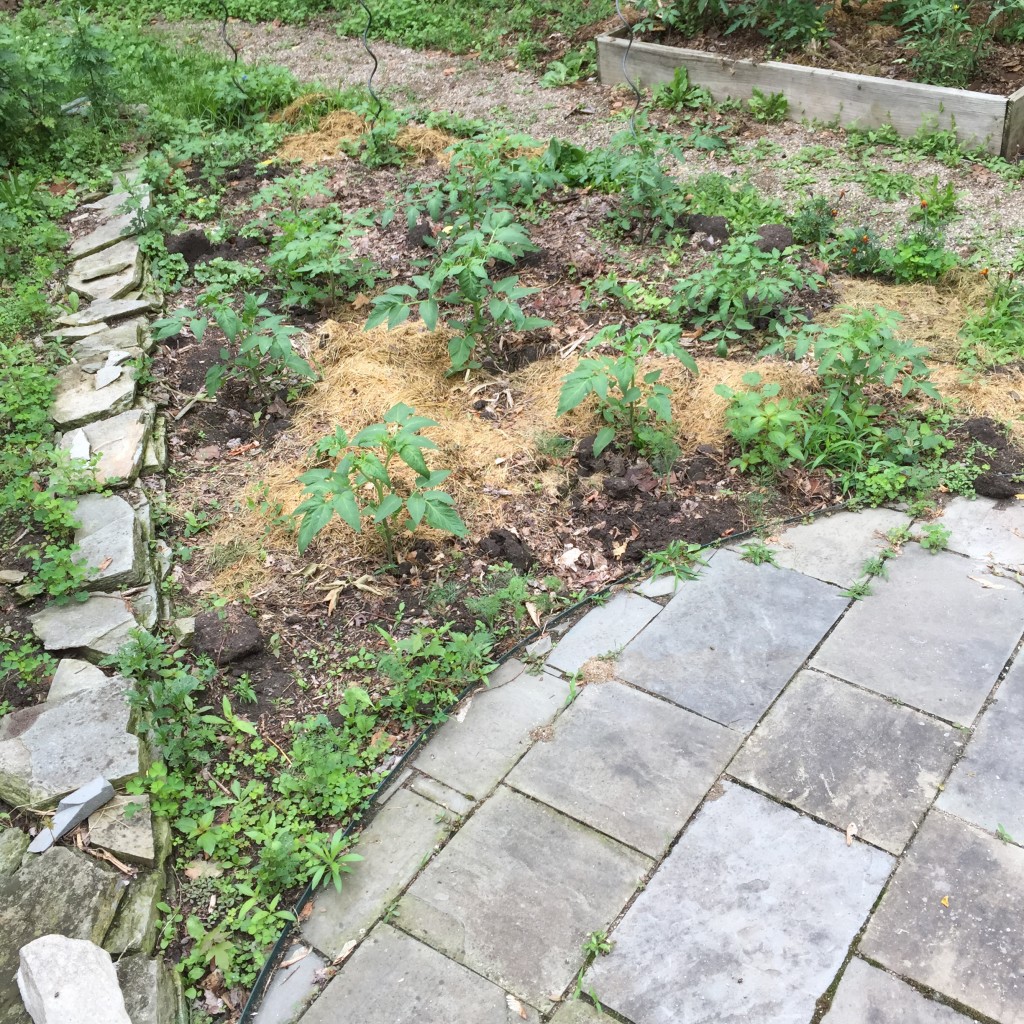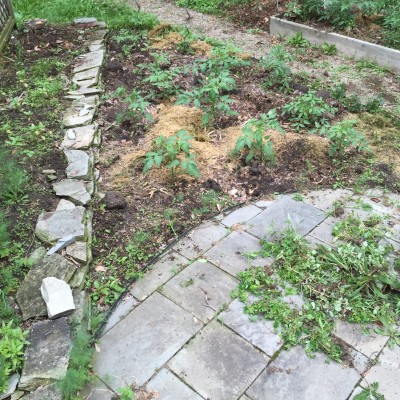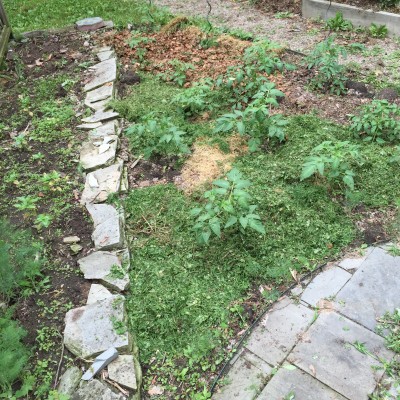It rained this week. At least, inclement weather is my excuse for waiting until today to head outside. I was glad to see the plants were not waiting for the weekend. The tomatoes that Jan placed in the “Wedge” bed were nice and stocky, signs that the soil is approaching the temperature of a comfortable bath water which is what these nightshades prefer. Just as diligent, however were the weeds, some felicitous. There were several volunteer dill plants, for instance, appearing along the edge of the flagstone patio. Yellow wood sorrel, that deliciously tart native plant, poked up here and there. I confess I chewed on them while I worked. Gardener’s treat, I declare. Of course there was bindweed (“We have always been at war with Oceania, er, I mean, Bindweed”) as well as pigweed, witch grass and several other less useful types of foliage. I snapped a photo, set the timer and got to work.
The beds were still moist, a rich damp black. Luckily, only a few droplets clung to the leaves. Any high level organic gardener will note that weeding shouldn’t take place under these conditions. The rationale is that weeding will disturb the soil, stirring up microbial beasties, and if the leaves are wet, these monsters might stick to the plants. Sure, yes. Yet I will quote a deeper wisdom: Make Hay when the Sun Shines. Not all of us have the luxury of weeding ONLY when the beds are most opportune. This is my day off. It’s not pouring down. I am weeding. In my defense, we’ve put down the start of mulch which minimizes soil to leaf contact.
I confess the results of my 20 minutes are not too impressive visually, but I was able to clear the weeds around all these tomatoes, as well as around the basil plants in the raised bed just off to the south. I also pulled a few of the larger weeds in the path.
I tacked on a little un-accounted time by mowing the back lawn. I figure it’s most effective to mulch right after weeding. If there are already weeds in a bed, there’s a chance they’ll weasel their way through the mulch. If there are only weed seeds, the mulch will have a better chance of smothering them. Plus, the soil was damp and a mulch would help keep that moisture from evaporating. I don’t time how long it takes to harvest grass clippings, mostly because it’s not a task I’m about to stop halfway. It costs what it costs in terms of time. I was able to gather enough clippings to blanket most of the tomatoes. Next time, maybe there’ll be enough for the basil, too. On the positive side, the amount of mulch on the wedge bed proper looks to be optimal. I’ll just supplement it a bit as it decomposes throughout the season.
Well, that’s it for today. Now I get to sit on the back porch and admire my handiwork at least until tomorrow.





